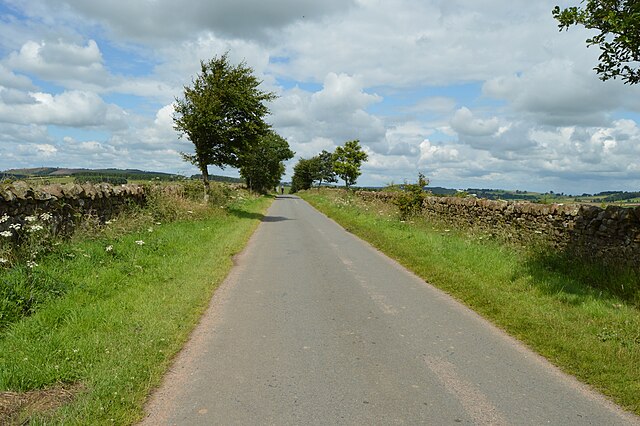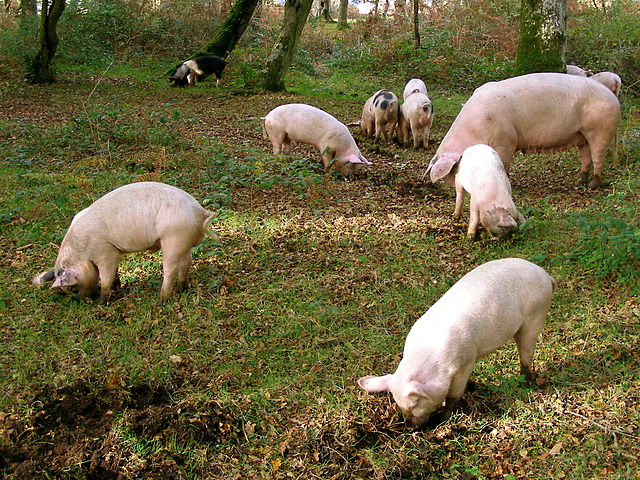Enclosure or inclosure is a term, used in English landownership, that refers to the appropriation of "waste" or "common land" enclosing it and by doing so depriving commoners of their rights of access and privilege. Agreements to enclose land could be either through a formal or informal process. The process could normally be accomplished in three ways. First there was the creation of "closes", taken out of larger common fields by their owners. Secondly, there was enclosure by proprietors, owners who acted together, usually small farmers or squires, leading to the enclosure of whole parishes. Finally there were enclosures by Acts of Parliament.
Decaying hedges mark the lines of the straight field boundaries created by the 1768 Parliamentary Act of Enclosure of Boldron Moor, County Durham.
View of the Scafell massif from Yewbarrow, Wasdale, Cumbria. In the valley are older enclosures and higher up on the fell-side are the parliamentary enclosures following straight lines regardless of terrain.
A parliamentary enclosure road near Lazonby in Cumbria. The roads were made as straight as possible, and the boundaries much wider than a cart width to reduce the ground damage of driving sheep and cattle.
Memorial stone commemorating those killed in the Newton Rebellion at the former church of St Faith.
Common land is land owned by a person or collectively by a number of persons, over which other persons have certain common rights, such as to allow their livestock to graze upon it, to collect wood, or to cut turf for fuel.
Poohsticks Bridge in Ashdown Forest, an area of common land.
Modern-day pannage, or common of mast, in the New Forest
Snake's head fritillary, North Meadow, Cricklade. This is grazed as Lammas common land.
View of the Scafell massif from Yewbarrow, Wasdale, Cumbria. In the valley bottom are older enclosures and higher up on the fell-side are later enclosures on poorer land with substantial walls following boundary lines regardless of terrain. Above those is the unenclosed common land







